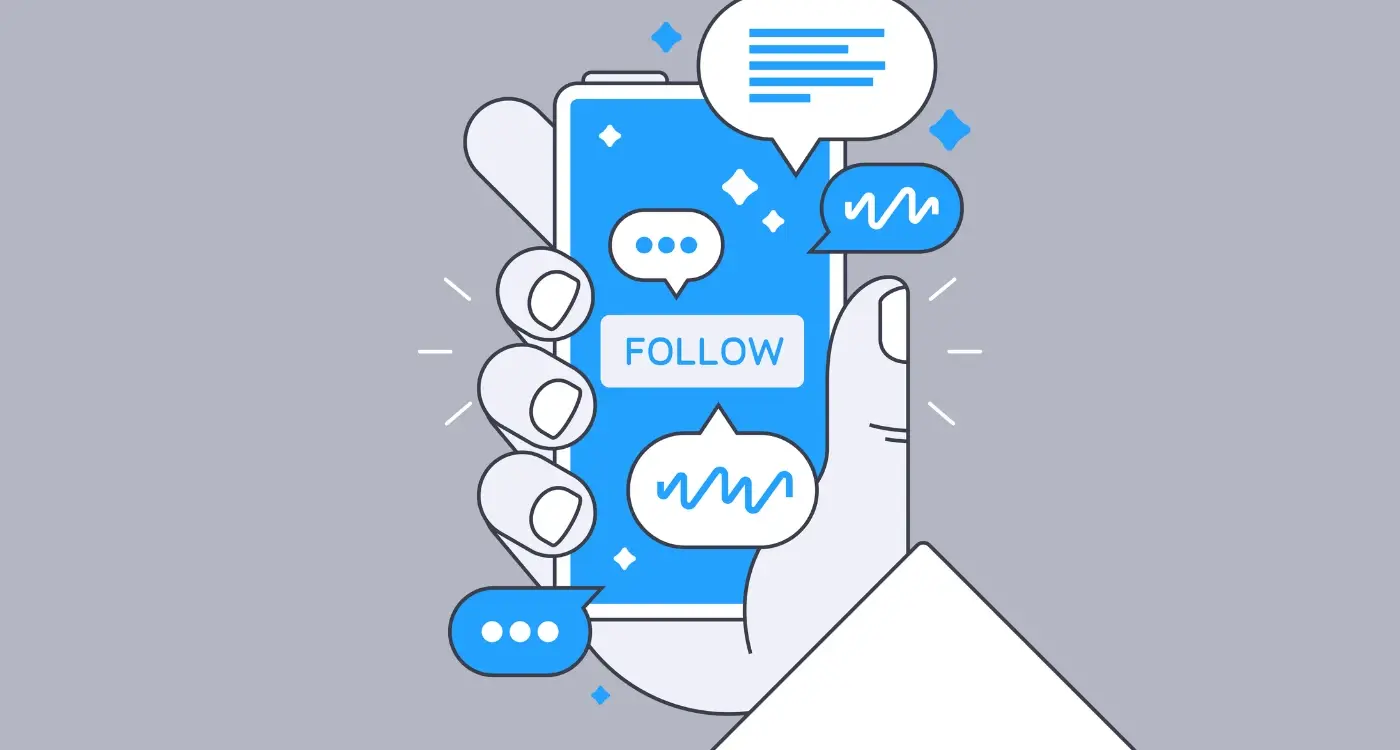What Makes Users Switch From Competitors to Your App?
You've built what you think is a fantastic app. The features work perfectly, the design looks professional, and your team is genuinely proud of what you've created. But then you check your user acquisition numbers and—bloody hell—people just aren't switching from your competitors. They're sticking with apps that, frankly, aren't as good as yours. It's frustrating, isn't it? You know your app is better, but users don't seem to care.
I've been in this exact situation more times than I'd like to admit. After years of building apps for startups and major brands, I've learned that creating a great app is only half the battle. The real challenge? Getting people to abandon their current solution and give yours a proper chance. User retention starts with user acquisition, and user acquisition often means convincing someone to switch from what they already know.
The thing is, people don't switch apps easily. They've invested time learning how their current app works, they've got their data stored there, and—most importantly—it's already solving their problem well enough. "Well enough" is your biggest enemy, not your direct competitors. When someone's current app does the job adequately, you need to give them compelling reasons to make the jump to yours.
The best way to get users to switch isn't by being slightly better—it's by being significantly different in ways that matter to them.
This guide will walk you through everything I've learned about competitive positioning and what actually makes users abandon their current apps for something new. We'll cover the psychology behind switching decisions, how to identify your real advantages, and most importantly, how to communicate those advantages in ways that convert hesitant users into loyal customers.
Understanding Why Users Leave Their Current Apps
Right, let's talk about something most app developers don't want to face—why people abandon apps they've already downloaded and used. I mean, you'd think once someone's invested time in setting up an account and learning how your competitor's app works, they'd stick with it. But that's not how it works, is it?
In my experience working with clients across different industries, I've noticed that users don't leave apps because they hate them. They leave because something better comes along or because the app stops meeting their changing needs. It's like... people outgrow apps the same way they outgrow clothes. What worked six months ago might feel clunky and outdated today.
The Top Reasons Users Jump Ship
- Performance issues—crashes, slow loading times, or features that simply don't work
- Poor user experience—too many steps to complete basic tasks
- Lack of new features or improvements over time
- Better alternatives that solve the same problem more efficiently
- Changes in pricing or subscription models
- Privacy concerns or data handling practices
- Outdated design that feels behind the times
But here's what really gets me—most app abandonment happens gradually, not suddenly. Users don't wake up one morning and think "I hate this app." Instead, they start using it less frequently, maybe skip a few days, then a week goes by. Before you know it, they've moved on to something else entirely.
The key insight? People are constantly evaluating whether their current apps still deserve space on their phones. And honestly, with limited storage and attention spans, that evaluation is getting stricter every year. Understanding this mindset is your first step towards building something that not only attracts users but keeps them engaged long-term.
The Psychology Behind App Switching Decisions
Right, let's get into people's heads for a moment. After years of watching users interact with apps, I've noticed something quite interesting—app switching isn't usually a logical decision. It's emotional, it happens fast, and most of the time users can't even explain why they made the jump.
The biggest trigger? Frustration. Not the "this is slightly annoying" kind, but the "I can't get this bloody thing to work" frustration that builds up over time. Users will put up with a lot—slow loading, confusing menus, even the occasional crash. But there's always a breaking point. Maybe it's the third time the app crashes during checkout, or when they realise they've been paying for features they can't actually find.
Here's what really gets me though—timing is everything. A user might be perfectly happy with their current app until they see yours at exactly the right moment. They're having a bad day with their existing solution, they stumble across your app (or your ad), and suddenly they're ready to make a change. That's why competitive positioning matters so much for user acquisition.
But here's the thing about human psychology—we're lazy. Switching apps is effort. Users need to download something new, learn how it works, maybe even migrate their data. So the pain of staying put has to outweigh the pain of switching. And that balance shifts constantly based on mood, circumstances, and what else is happening in their life.
Focus your messaging on the specific frustrations your competitors create, not just what your app does better. "Tired of apps that crash during checkout?" hits harder than "We have stable payments."
The Social Proof Effect
Actually, there's one more psychological trigger that works brilliantly for user retention and getting people to switch—seeing other people make the jump. When someone notices their colleagues or friends using a different app and having a better experience, that social proof becomes incredibly powerful. It's not just about the features anymore; it's about not being left behind.
Identifying Your Competitive Advantages
Right, let's get real about what makes your app different—and I don't mean "different" in some marketing fluff way. I mean genuinely, measurably better at solving problems your competitors can't or won't tackle properly.
After working with hundreds of apps across every industry you can think of, I've noticed something interesting. The most successful apps don't try to be everything to everyone; they find one or two things they can do better than anyone else and they absolutely nail those things. This is particularly important when you're implementing strategies to compete with industry giants—finding your niche and doing it exceptionally well.
Finding Your Edge
Your competitive advantage might be hiding in plain sight. Maybe your checkout process is three taps instead of seven. Maybe your app works offline when others don't. Or perhaps you've solved a privacy concern that keeps users up at night—without them even realising it was bothering them.
I've seen apps win purely because they load two seconds faster than the competition. Sounds trivial? Tell that to the e-commerce client who saw their conversion rate jump 23% after we optimised their app speed. Users notice these things, even if they can't articulate why they prefer one app over another.
The Advantage Audit
- Download your top 3 competitors' apps and use them properly for a week
- Time how long common tasks take in each app
- Note which features are missing or poorly implemented
- Check their app store reviews for repeated complaints
- Look at their update frequency and responsiveness to user feedback
Don't just focus on features though. Your advantage could be your customer service, your data security approach, or even something as simple as having actual humans answer support queries instead of chatbots. Sometimes the smallest improvements create the biggest switching momentum.
Creating a Superior Onboarding Experience
Your onboarding experience is where the magic happens—or where it all falls apart. I've seen apps lose 90% of their new users within the first week simply because they failed to show value quickly enough. When someone's switching from a competitor, they're already sceptical; they need reassurance that they made the right choice, and they need it fast.
The biggest mistake I see? Apps that try to explain everything upfront. Look, your new users don't need a tour of every single feature—they need to accomplish one meaningful task that proves your app is worth their time. If you're building a fitness app, don't show them 15 different workout categories; help them log their first workout in under 60 seconds.
Progressive Disclosure Works
Start with the absolute basics and layer on complexity as users demonstrate engagement. I worked on a project management app where we reduced our initial setup from 12 steps to just 3. User retention jumped 40% because people could actually start using the thing instead of abandoning it halfway through setup. The other 9 steps? We introduced them gradually as users explored the app naturally.
The best onboarding doesn't feel like onboarding at all—it feels like using the app
Data import is where you can really shine if you're targeting switchers. Make it dead simple to bring their existing data across from competitors. Yes, it's technically challenging, but it's also your secret weapon for user acquisition. When someone can import their entire project history or contact list with one click, you've just eliminated the biggest barrier to switching. That's not just good UX—it's competitive strategy disguised as user experience.
Building Features That Matter to Real Users
Here's the thing about features—most apps have way too many of them. I've seen countless projects where teams get excited about adding every possible function they can think of. The result? A bloated app that confuses users instead of helping them.
When someone switches from a competitor to your app, they're not looking for more features. They're looking for the right features. Features that actually solve their problems better than what they're currently using.
Focus on Core User Jobs
Every user downloads your app to get a specific job done. Maybe they want to track their expenses, edit photos, or order food. Whatever it is, that core job should work perfectly before you worry about anything else. If your expense tracker can't handle split bills properly but has fancy charts nobody asked for, you've missed the point entirely.
I always tell clients to list out the top three things users need to accomplish in their app. Then build those three things really, really well. Everything else is just noise until you get the basics right.
The Features That Actually Matter
- Speed and reliability—users will forgive missing features but not slow performance
- Offline functionality for core tasks—people use apps everywhere, not just on WiFi
- Easy data import from competitors—make switching as painless as possible
- Customisation options that matter—let users adapt the app to their workflow
- Smart defaults—the app should work well without any setup
The best feature you can build? One that works exactly how your users expect it to work. No learning curve, no confusion, just instant value. That's what makes people stay after they switch.
Pricing and Value Proposition Strategies
Right, let's talk about pricing—because getting this wrong can kill even the most brilliant app. I've seen countless apps fail not because they weren't good enough, but because their pricing strategy made no sense for their target market. The thing is, when you're trying to get users to switch from a competitor, your pricing needs to tell a story that justifies the hassle of making that change.
Free trials are your best friend here. But here's what most people get wrong—they make the trial too short or too limited. If someone's been using a competitor for months or even years, they need proper time to see why your app is better. I usually recommend at least 14 days for anything business-related, longer if its complex. And don't cripple the trial version so much that users can't actually experience your key benefits.
Value-Based Pricing Models
Your pricing should reflect the value you're delivering, not just what your competitors charge. If your app saves users two hours a week, what's that worth to them? If it helps them make better decisions or avoid costly mistakes, factor that in. I've worked with apps that charged 3x more than competitors and still won because they could clearly demonstrate their superior value.
Never compete solely on price—compete on value. If you're the cheapest option, users will wonder what's wrong with your app.
Switching Incentives That Actually Work
Here are the pricing strategies I've seen work best for encouraging app switching:
- Migration assistance credits (paying for data import or setup time)
- Extended free periods for switching (like 3 months free instead of 1)
- Grandfathered pricing for early switchers
- Partial refunds if they're not satisfied after 60 days
- Competitor price matching with added features thrown in
The key is making the switch feel like a no-brainer financially. Remove the risk, make it easy, and clearly communicate what they're gaining by making the move. Your pricing strategy should make staying with the competitor feel like the expensive option.
Marketing to Potential Switchers
Getting people to switch apps isn't about shouting louder than your competitors—it's about speaking directly to the frustrations they're already feeling. I've seen countless apps fail because their marketing focused on features instead of problems; users don't care about your fancy new algorithm, they care about whether you can solve their headache better than the app they're currently using.
The most effective switching messages I've crafted always start with acknowledgment. "Tired of waiting 30 seconds for your banking app to load?" or "Fed up with fitness apps that ignore your actual schedule?" When someone reads that and thinks "bloody hell, that's exactly my problem," you've got their attention. From there, it's about positioning your app as the obvious solution—not the revolutionary one, just the sensible choice.
Focus on Pain Points, Not Features
Your messaging should feel like you've been watching users struggle with their current app. I always tell clients to lead with the problem, then briefly mention how they solve it. "Finally, a note-taking app that actually syncs reliably" works better than "Advanced cloud synchronisation technology with 99.9% uptime." People want relief from their current frustration, not technical specifications.
Make Switching Feel Risk-Free
The biggest barrier to switching isn't usually the competitor's features—it's the fear of change. Your messaging needs to address this directly. Free trials, data import tools, and "keep using both until you're ready" approaches work because they remove the commitment pressure. I've found that messages like "Try it alongside your current app" convert much better than "Switch today." People need permission to take their time with the decision, and smart messaging gives them exactly that.
Measuring and Improving Your Switch Rate
Right, so you've built what you think is a better app than your competitors—but how do you actually know if people are switching? This is where most app developers get stuck because measuring switch rates isn't as straightforward as tracking downloads or user sessions.
The key metric you want to track is your competitive conversion rate. This measures how many users who previously used a competitor's app now actively use yours instead. I track this by asking new users during onboarding: "What were you using before this?" It's a simple question but gives you goldmine data about where your users are coming from.
Setting Up Your Tracking System
You'll need to measure three things: acquisition source, user behaviour patterns, and retention compared to industry averages. Set up events in your analytics to track when users complete key actions that indicate they've truly switched—not just downloaded your app. For most apps, this means they've used your core feature at least three times in their first week.
The best apps don't just steal users from competitors; they create such a compelling experience that users can't imagine going back to their old solution
Improving Your Switch Rate
Once you know your baseline, focus on the friction points. I've found that most users abandon the switching process during data migration or when they can't find their familiar features. Make switching dead simple—offer to import their data, create comparison guides showing where everything is, and send gentle reminders during their first week. The apps that nail this see switch rates improve by 40-60% within just a few months of optimisation.
Conclusion
Getting users to switch from their existing apps to yours isn't a one-time trick—it's about building something genuinely better and making sure people know about it. After working on hundreds of app projects, I've seen that the most successful switches happen when you solve real problems in ways that feel almost obvious once people try them.
The key is understanding that switching requires effort from users. They need to download your app, learn how it works, and probably migrate their data or change their habits. That's a big ask! So your app needs to be noticeably better, not just slightly different. Whether thats through superior design, unique features, better performance, or simply understanding your users needs better than anyone else.
Don't forget that first impressions matter more than ever. Your onboarding experience is make-or-break territory—users will decide within the first 30 seconds whether your app is worth their time. Make those seconds count by showing immediate value rather than lengthy tutorials or registration forms.
Here's something I tell all my clients: switching users are often your most valuable customers because they've already proven they're willing to change when they find something better. They become advocates if you treat them right, and they understand the pain points of your competitors better than anyone.
The mobile app world keeps evolving, but the fundamentals remain the same. Build something people actually want, make it easy to use, and communicate its value clearly. Focus on solving real problems rather than adding flashy features nobody needs. Most importantly, keep listening to your users—they'll tell you exactly what would make them switch if you pay attention.
Share this
Subscribe To Our Learning Centre
You May Also Like
These Related Guides

Should Your App Target Your Competitor's Unhappy Users?

What Makes Some Banking Apps More Successful Than Others?



